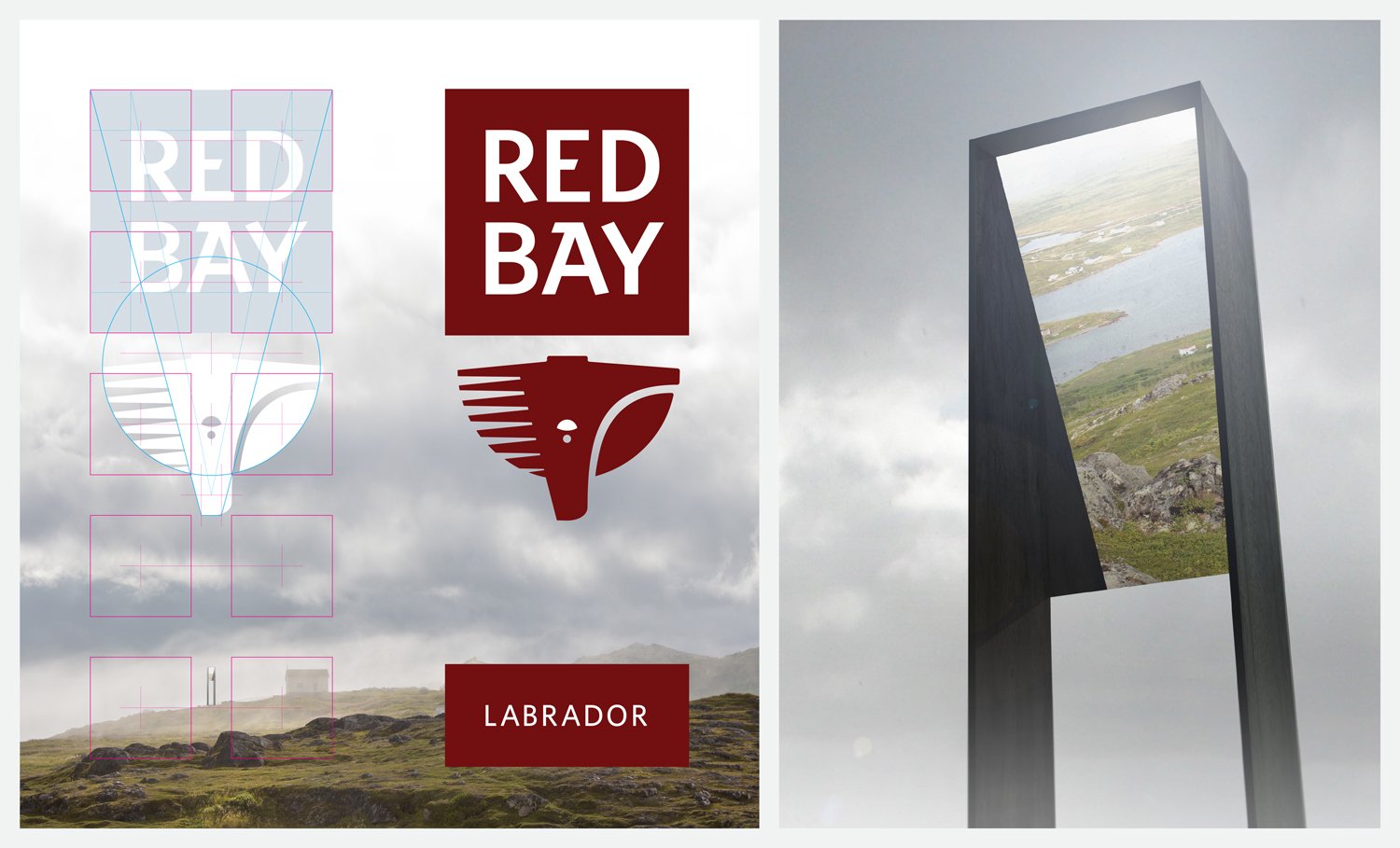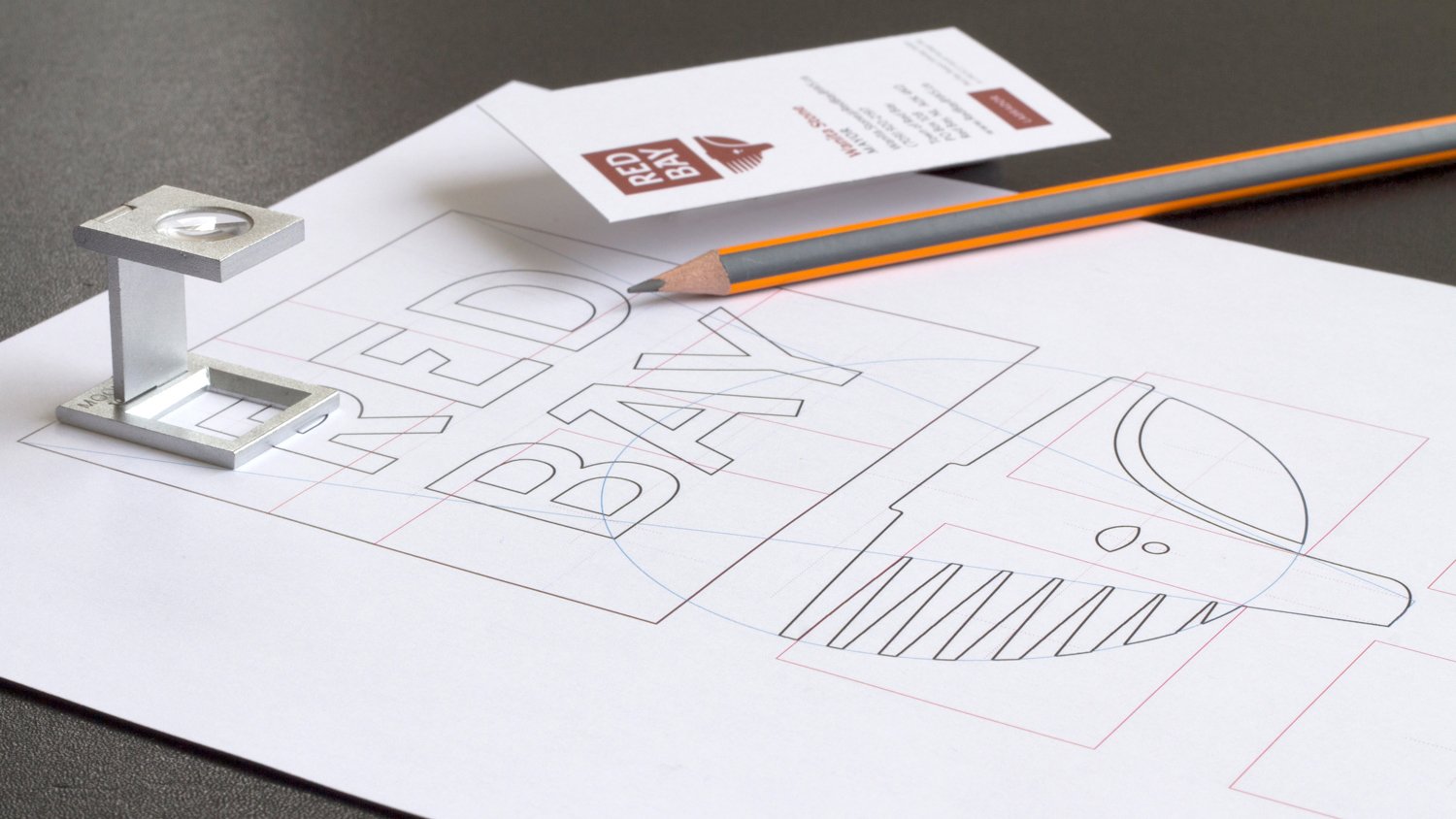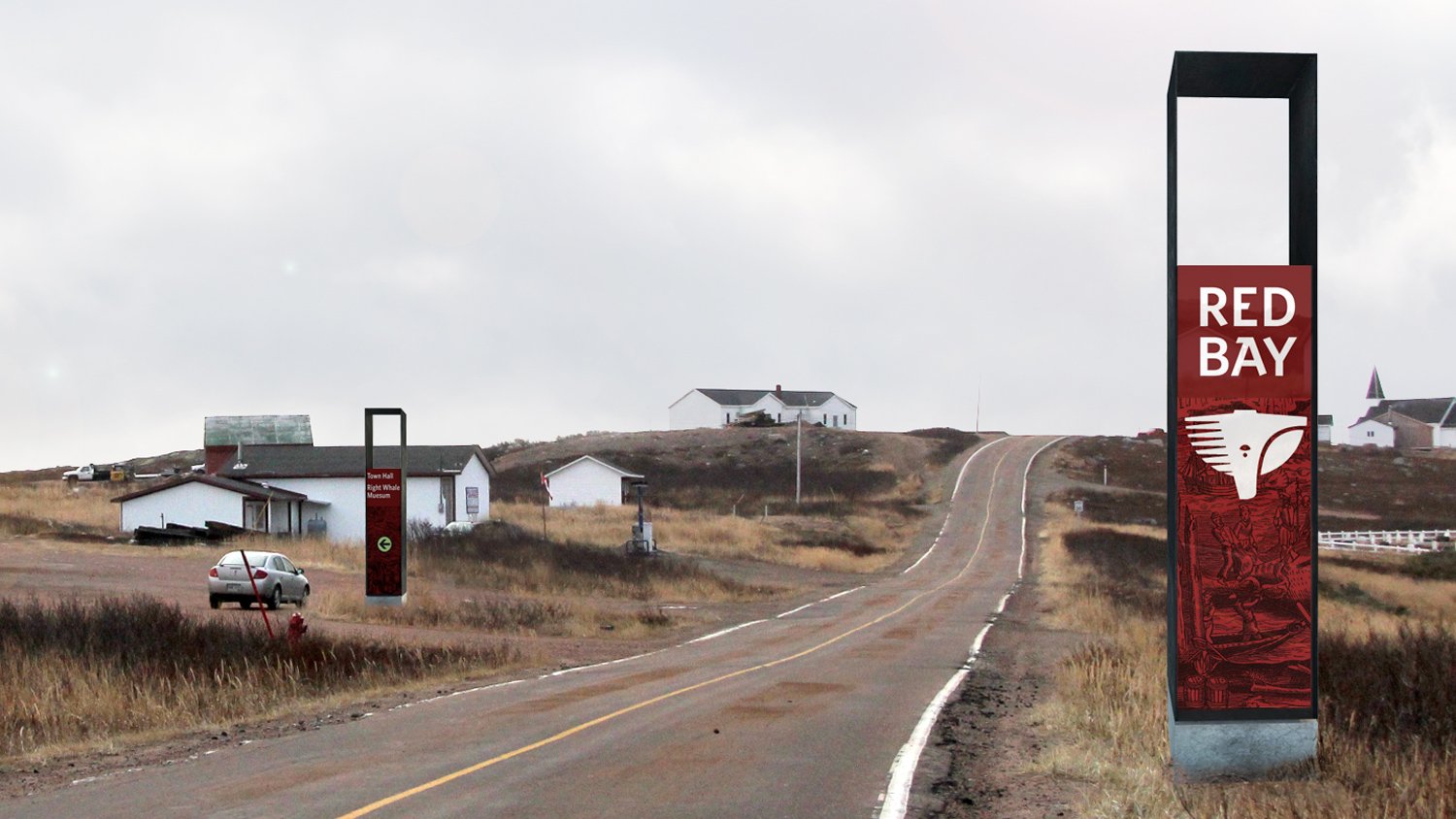Red Bay Basque Whaling Station
Red Bay Basque Whaling Station
Aligning promise to experience
Red Bay is a modern fishing village, but with a surprising history: it was the site of a vast 16th century industrial Basque whaling operation, largely unknown until the 1970s.
After producing Red Bay's visitor experience manual (with partner Susan MacLeod), we were asked to build a brand for Red Bay that would work in harmony with associated brands such as Newfoundland and Labrador, Destination Labrador, Parks Canada, and UNESCO.
Our place branding addresses the lack of visible heritage with a subtle piece of signature architecture—the “monument”—that encourages today’s visitors to contemplate 16th century whaling lookouts. All brand elements (logo, signage, graphics, and colours) are based on the monument's form.
Status
2013–14 (visitor experience master plan)
2015–16 (brand and wayfinding)
Our Role
Brand, architecture, wayfinding, landscape architecture
Client
Red Bay Basque Whaling Station World UNESCO Heritage Site
Location
Red Bay, Labrador







